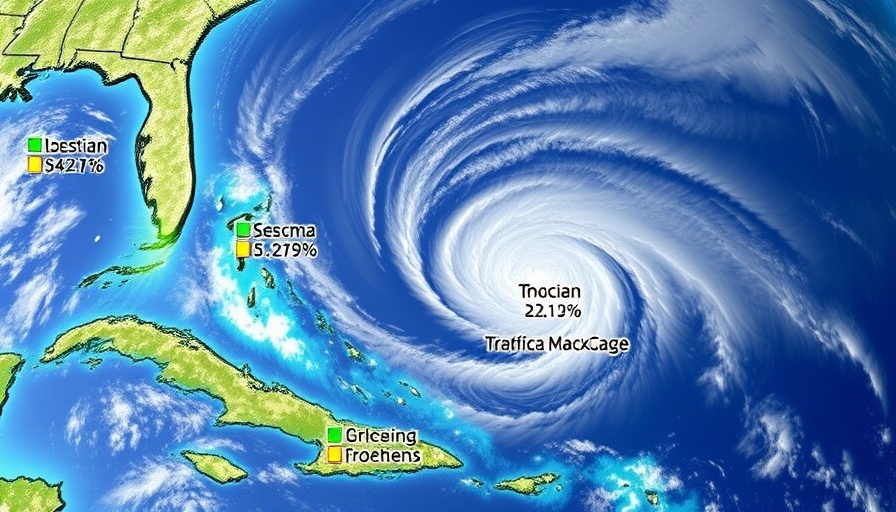
The Gulf of Mexico: A Testament to Nature's Struggles
For those lucky enough to visit the Texas Gulf Coast, the first impression may be its breathtaking beauty. The gentle lapping of waves, the soothing salty breeze, and the warm feel of fine sand beneath your feet all combine to create an idyllic getaway. However, those familiar with the familiar coastlines may notice distressing changes. The Gulf of Mexico, once a bastion of ecological and cultural richness, faces unprecedented environmental challenges that threaten its future existence.
What’s at Stake? Understanding Coastal Erosion
The Gulf Coast is undergoing a profound transformation, akin to a battle for survival. Areas such as the Río Grande Delta have drastically shrunk, and estimates suggest that the Mississippi River Delta could disintegrate altogether by 2050. This relentless erosion isn't just a local issue; it's a forewarning sign of climate change effects felt along the coast and beyond. Barrier islands, coastal peninsulas, and precious wetlands are experiencing rapid degradation, making them particularly vulnerable to the increasing threat of sea level rise.
A Tale of Two Deltas: Insights from the Rio Grande and Mississippi River
Historically, deltas are known for their vibrant biodiversity and are essential for nurturing marine life. The Mississippi River Delta, a cradle of fisheries and seabird populations, is facing imminent collapse. The region’s unique chenier plains are disappearing into the Gulf, significantly hampering marine and avian habitats. These ecosystems not only house various species but also represent the natural resilience of coastal environments. The ecological health of the Gulf is paramount, and its deterioration signals a larger environmental crisis.
Human Intervention: Disrupting Nature’s Balance
Human activities have played a significant role in the Gulf Coast's decline. The construction of levees, canals, and dams has disrupted the natural sediment flow that has, for centuries, replenished coastal environments. This disbalance has exacerbated erosion rates, seeing them soar to alarming levels, while a six-fold increase in sea-level rise looms as a major threat. Addressing these challenges requires a reevaluation of coastal management practices and a commitment to restoring natural processes wherever possible.
The Critical Role of Wetlands in Coastline Defense
Wetlands and seagrass meadows serve as the frontline defense against coastal erosion. They act as natural buffers, absorbing storms and sustaining marine life. However, their rapid disappearance weakens this natural protection, exposing coastlines to more severe weather events. Conservation efforts are essential for preserving these resources, as they provide not only ecological benefits but also economic ones, supporting local fisheries and tourism.
Looking Ahead: Future Trends and Actions Needed
The pattern of destruction we currently witness must serve as a call to action. Whether we seek to invest in restoration projects or rethink urban planning in vulnerable areas, diligent measures are necessary to ensure the Gulf remains vibrant for future generations. Future predictions indicate that the loss of coastal habitats could accelerate, impacting marine life, local economies, and communities throughout the Gulf Coast.
Your Role: Community Engagement and Awareness
Understanding these challenges is the first step toward action. Engaging with local organizations that focus on coastal conservation, participating in clean-up efforts, and advocating for sustainable policies are ways individuals can help. The deterioration of the Gulf of Mexico should motivate both local communities and policymakers alike to take meaningful steps to ensure its resilience.
The Gulf of Mexico may be on the brink, but understanding the depth of these environmental challenges equips us to make informed decisions. By raising awareness and collaborating on conservation efforts, we can begin to turn the tide and protect this vital ecosystem for generations to come.
 Add Row
Add Row  Add
Add 




Write A Comment